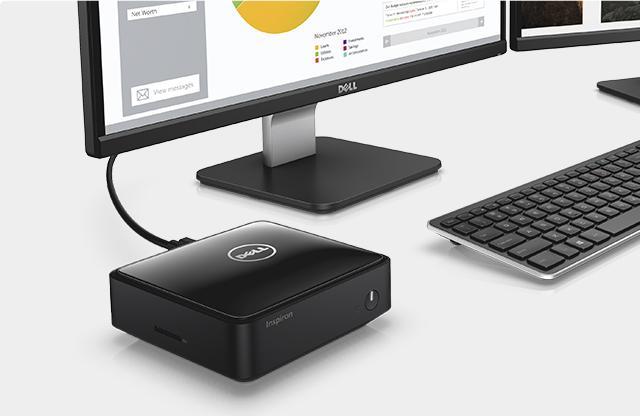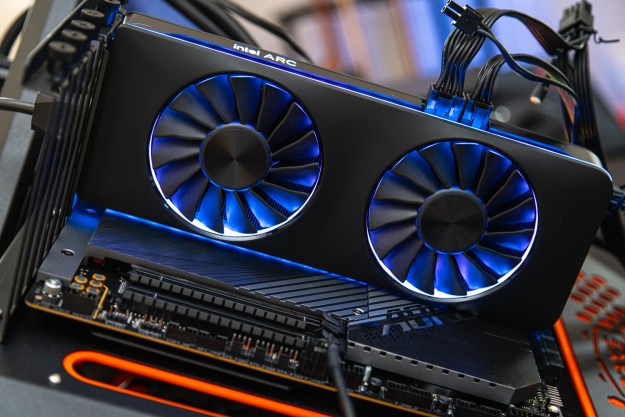
The Inspiron Micro follows the lead of contenders like the recently released HP Stream Mini. It’s a small box that easily blends into a living room but still pack enough punch to stream Netflix, Hulu, or Amazon Prime content in full 1080p HD. Mini computers are all the rage these days, with entries like Intel’s NUC i7 and i5 line proving a hit both with consumers and our reviewers.
“It can fit on any shelf or desk without clutter, and you can hold it with one hand. Its streamlined design makes it easy to blend in with your other devices,” says Dell.
The J1800 and J2900 will feature Celeron and Pentium dual-core processors, respectively. These are based off the Bay Trail platform, and aren’t as quick as Intel’s mainstream Core product line. Both models feature 32GB of SSD storage, 2GB of onboard RAM, HDMI and DisplayPort for video out, one USB 3.0 port, three USB 2.0, and an Ethernet jack. Wireless connectivity is handled by an 802.11ac WiFi card, Bluetooth 4.0, as well as an SD card reader on the back.
The Inspiron Micro J1800 is on sale now starting at $180, while the J2900 will be $50 more, at $230. Both systems will ship with Windows as part of the price.
Dell’s pricing is competitive, but it’s not incredible given the hardware. The HP Stream starts at $180 with similar hardware, but its Celeron 2957U is built on the same architecture as 4th-generation Intel Core chips, making it quicker than the Dell.
On the other hand, Dell’s entry is only slightly more expensive than the Intel Compute Stick, and it should prove much quicker.
Editors' Recommendations
- Gamers are reportedly returning Intel Core i9 CPUs in droves
- Intel’s next-gen GPU might be right around the corner
- Intel is cooking up an exciting DLSS 3 rival
- Intel said AMD’s Ryzen 7000 is snake oil
- I tested Intel’s new overclocking tool, and it does AI all wrong


